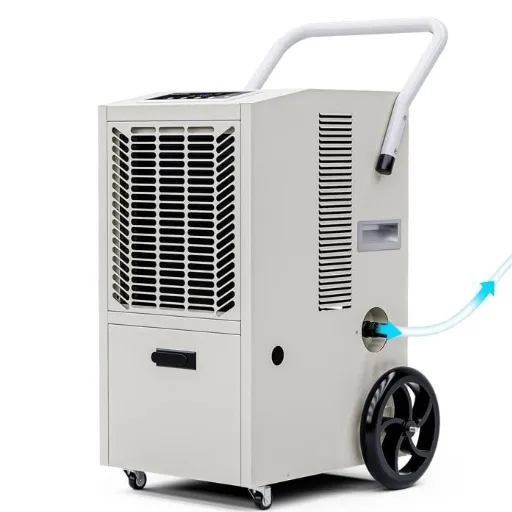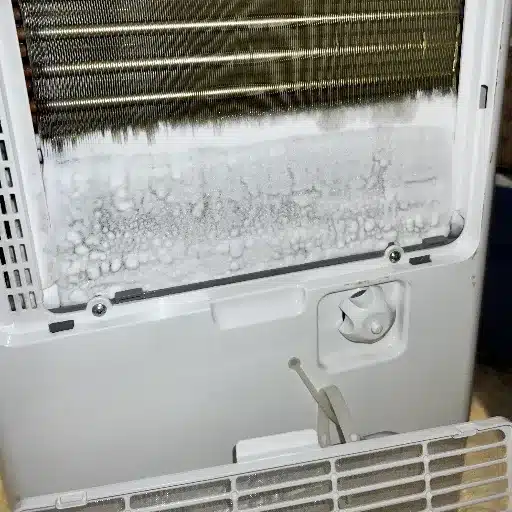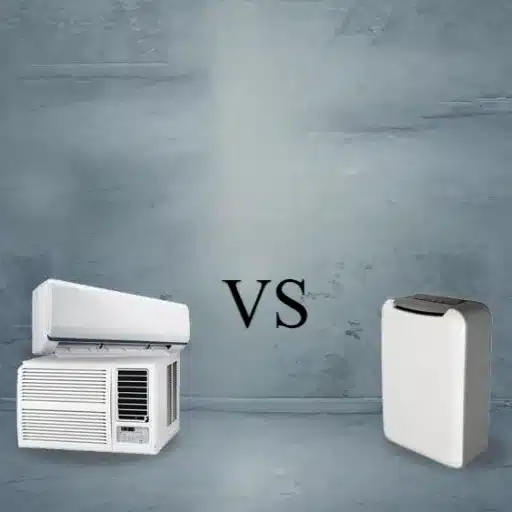When it comes to maintaining the health of your home, the often-overlooked crawl space plays a critical role. Excess moisture in this area can lead to mold growth, wood rot, and even compromised air quality inside your living space. That’s where a crawl space dehumidifier comes in—a powerful solution for managing humidity levels and preserving your home’s structural integrity. But how much should you expect to pay for installation in 2025? This guide dives into the factors that influence crawl space dehumidifier installation costs, from equipment prices to labor fees and additional considerations. Whether you’re planning for a new installation or upgrading an existing system, we’ll provide expert insights to help you budget effectively and make informed decisions.
Why Do You Need a Crawl Space Dehumidifier?
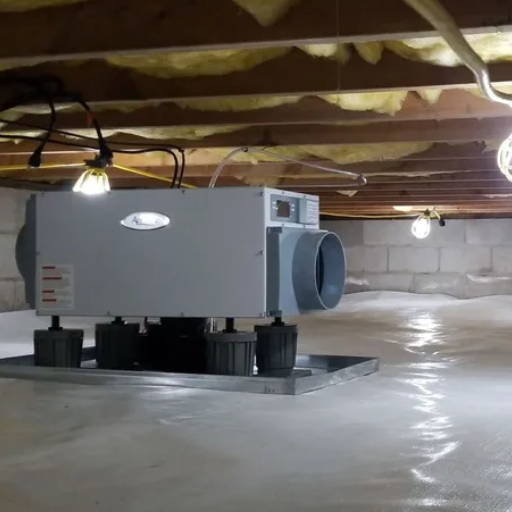
A crawl space dehumidifier is essential for maintaining a healthy home environment. It helps reduce excess moisture in your crawl space, preventing problems like mold growth, wood rot, and pest infestations. By controlling humidity levels, it also improves indoor air quality and protects your home’s structural integrity. A dehumidifier can ultimately save you money by minimizing repair costs and enhancing energy efficiency.
Understanding Humidity Levels in Crawl Spaces
Humidity levels in crawl spaces play a critical role in the overall health of your home. Ideally, the relative humidity in a crawl space should be maintained between 30% and 50%. Levels above 60% can create a conducive environment for mold growth, wood decay, and pest infestations, while excessively low humidity may cause structural materials such as wood to become brittle and prone to cracking.
Crawl spaces are particularly susceptible to high humidity due to factors like poor ventilation, water infiltration, and soil moisture. For example, studies indicate that unsealed or vented crawl spaces exhibit significantly higher relative humidity compared to sealed spaces — sometimes reaching levels of 80% or more. This excess moisture not only compromises the structural integrity of your home but also exacerbates potential health risks, such as respiratory issues caused by mold spores.
Implementing moisture control measures, such as sealing vents, installing vapor barriers, and utilizing a dedicated dehumidifier, can drastically lower the humidity in crawl spaces. According to recent reports, homes with proper crawl space encapsulation and dehumidification systems show a reduction in moisture levels by up to 50%. These strategies not only protect your home but also contribute to a safer and more energy-efficient living environment.
Preventing Mold Growth with Dehumidifiers
Mold thrives in environments where the relative humidity exceeds 60%, making it critical to maintain indoor humidity levels between 30-50% to inhibit its growth. Dehumidifiers play a vital role in achieving this balance by extracting excess moisture from the air, creating conditions less conducive to mold spores. For instance, studies reveal that modern energy-efficient dehumidifiers can lower indoor moisture levels by up to 40% within just 24 hours of use, depending on the room size and humidity levels.
Advanced dehumidifiers are equipped with sensors that continuously monitor humidity and automatically adjust their operation to maintain optimal conditions. Many devices also feature HEPA filters, which capture airborne mold spores and allergens, further reducing the spread of mold in indoor spaces. Proper placement of dehumidifiers—such as in basements, bathrooms, and crawl spaces—ensures the most effective moisture control, targeting areas where moisture accumulation is most likely to occur.
For homes in regions with high humidity, deploying whole-house dehumidifiers as part of HVAC systems can offer comprehensive protection. Research indicates that integrating dehumidification systems can reduce the likelihood of mold infestation in residential spaces by as much as 70%. By controlling moisture proactively, these devices contribute significantly to the structural preservation of homes, as well as to the health and well-being of occupants.
Enhancing Indoor Air Quality for Your Home
Proper ventilation is a critical component in enhancing indoor air quality. Modern energy-efficient homes, while excellent for conserving energy, often limit airflow, which can trap pollutants such as allergens, volatile organic compounds (VOCs), and particulate matter. According to scientific studies, improved ventilation systems, such as energy recovery ventilators (ERVs) or heat recovery ventilators (HRVs), help by exchanging stale indoor air with fresher outdoor air while maintaining energy efficiency. These systems can reduce the concentration of indoor pollutants by up to 50%, significantly improving the overall air quality.
Additionally, upgrading to high-efficiency particulate air (HEPA) filters within HVAC systems can capture particles as small as 0.3 microns, including dust, pollen, and even some bacteria. For instance, research reveals that using HEPA filtration systems can trap 99.97% of airborne particles, making them a powerful solution for homes with individuals prone to allergies or respiratory issues. Pairing improved ventilation with advanced filtration ensures an overall healthier environment for all occupants.
What Are the Key Cost Factors for a Crawl Space Dehumidifier?
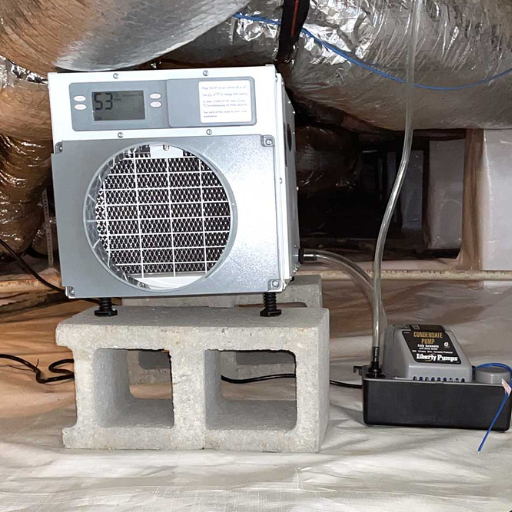
The cost of a crawl space dehumidifier depends on several key factors:
- Capacity and Size – Higher-capacity dehumidifiers designed to handle larger spaces or higher humidity levels typically cost more. Make sure to select a unit suitable for your crawl space size and moisture needs.
- Energy Efficiency – Energy-efficient models may have a higher upfront cost, but they save money in the long run by reducing energy consumption.
- Additional Features – Features like built-in pumps for easy water removal, humidity control settings, or smart connectivity can increase the price.
- Brand and Warranty – Reputable brands with strong warranties may have higher prices but offer better durability and customer support.
- Installation Costs – Some units require professional installation, which adds to the total cost. Portable models, however, generally do not have this requirement.
Evaluating the Upfront Cost of Installation
When considering the installation costs of a dehumidifier, several elements play a crucial role in determining the total expense. For whole-house dehumidifiers, professional installation is often required, which can range between $500 and $2,000 depending on the complexity of the system and local labor rates. This cost typically includes integrating the unit into your existing HVAC system and ensuring efficient operation. Factors such as the size of your home, the type of ductwork, and accessibility significantly influence installation costs.
For smaller, portable dehumidifiers, installation costs are often negligible, as these units are designed for plug-and-play convenience. However, ongoing operational expenses, such as energy consumption, should also be taken into account. Energy-efficient models, while potentially pricier upfront, can significantly reduce long-term costs through lower utility bills. For instance, ENERGY STAR certified dehumidifiers use approximately 15% less energy than standard models, saving homeowners up to $175 over the unit’s lifespan.
Additionally, some homeowners may need to set up dedicated drainage systems for continuous water removal, adding another layer to installation expenses. This might involve the use of a condensate pump to drain the water directly to an outlet, which typically averages around $100 to $300, including equipment and labor. Taking these variables into account ensures a clearer understanding of what to expect when evaluating the full cost of installation.
Understanding Energy Costs and Efficiency
Energy costs and efficiency are critical factors when considering long-term savings and environmental impact. Modern energy-efficient systems, such as high-efficiency HVAC units, utilize advanced technologies to reduce overall energy consumption. For instance, systems with a Seasonal Energy Efficiency Ratio (SEER) rating of 16 or above can lower energy usage by up to 30% compared to older models with lower ratings. Such savings not only benefit the environment by reducing carbon footprints but also lead to significant reductions in monthly utility bills.
According to recent reports, the average household in the United States spends approximately $115 per month on electricity, with heating and cooling systems accounting for nearly 50% of this expenditure. Upgrading to energy-efficient systems can lower these costs, often leading to annual savings of $200 to $500, depending on the specific technology and regional energy prices. Additionally, many energy-efficient units are eligible for federal tax credits or local rebates, effectively reducing the initial investment costs.
Smart home integrations further enhance energy efficiency. For example, programmable thermostats and energy monitoring systems allow for precise control of heating, cooling, and electricity use. These devices can adapt schedules based on usage patterns, ensuring systems run only when needed, which can reduce energy waste and increase cost savings. By combining efficient technology with thoughtful usage practices, homeowners can achieve both budget-friendly energy solutions and sustainable living.
Considering the Type of Dehumidifier for Your Needs
Selecting the right dehumidifier is crucial to maintaining a comfortable and healthy indoor environment. The choice largely depends on the specific conditions of your space, such as room size, humidity levels, and the intended use. Broadly, dehumidifiers can be categorized into three primary types—refrigerant, desiccant, and whole-house models—each designed for different requirements.
Refrigerant Dehumidifiers
Refrigerant dehumidifiers work by condensing moisture from the air using cooling coils. These are highly effective in warm, humid climates and are best suited for spaces such as basements, living rooms, or rooms with high moisture. Models can handle capacities typically ranging from 20 to 70 pints per day, with modern units often featuring digital humidity controls and auto-shutoff functions. For spaces up to 1,500 square feet, a 30-pint unit suffices, while larger areas may require a 50- or 70-pint model for optimal performance.
Desiccant Dehumidifiers
Desiccant dehumidifiers absorb moisture using a hygroscopic material and are ideal for cooler environments where refrigerant models may struggle. These systems operate efficiently even at low temperatures, often down to 33°F, making them perfect for garages, crawl spaces, or unheated rooms. Though typically smaller in capacity than refrigerant options, desiccant dehumidifiers are quieter and lighter, catering to specialized needs such as mold prevention and damp air extraction.
Whole-House Dehumidifiers
If humidity control is needed across an entire home, whole-house dehumidifiers prove invaluable. These systems integrate with your existing HVAC system to regulate moisture on a large scale, with capacities ranging from 90 to 130 pints per day or more. While installation costs may be higher, whole-house units provide superior long-term efficiency, particularly in environments consistently experiencing high humidity.
When deciding on a dehumidifier, consider factors such as energy efficiency ratings, ease of maintenance (e.g., filter cleaning or water tank removal), and advanced features like continuous drainage or smart connectivity. Choosing an appropriately sized and functional unit ensures improved air quality, reduced mold and mildew growth, and overall comfort for your living or working space.
How to Install a Crawl Space Dehumidifier?
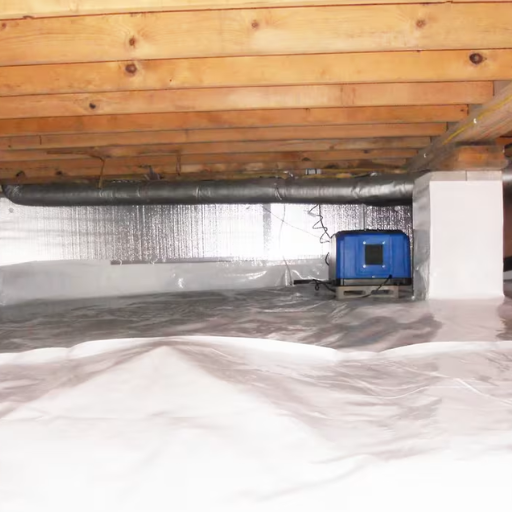
- Prepare the Crawl Space
Clear the area of debris and ensure the space is clean and dry. Check for any water leaks or insulation issues and address them before installation.
- Choose an Installation Location
Select a flat, stable surface in the crawl space with adequate airflow around the dehumidifier. Avoid placing it directly against walls or other obstructions.
- Set Up Drainage
Attach a drainage hose to the dehumidifier and route it to a safe and appropriate drainage outlet, such as a sump pump or exterior drain. Ensure the hose is secure and slopes downward for proper flow.
- Plug in and Test the Unit
Connect the dehumidifier to a grounded electrical outlet. Turn it on and verify that it is operating correctly, including the drainage system. Adjust settings as needed for optimal performance.
- Monitor Performance
Regularly check the dehumidifier to make sure it is functioning properly, and clean or replace filters as recommended by the manufacturer.
Steps to Install a Dehumidifier in a Crawl Space
Choose the Right Size and Capacity
Selecting the correct size of a dehumidifier is crucial for its effectiveness. The capacity of a dehumidifier is measured in pints of moisture removed per day. For a typical crawl space, a unit with a capacity between 50 to 70 pints is often recommended. However, if your crawl space has high humidity levels or a larger surface area, consider a unit with a higher capacity to ensure optimal performance. Refer to the manufacturer’s specifications for guidance.
Seal the Crawl Space Properly
Before installing the dehumidifier, ensure the crawl space is adequately sealed to prevent excess moisture from entering. This includes repairing cracks in the foundation, sealing vents, and using a heavy-duty vapor barrier over the ground. A well-sealed crawl space maximizes the efficiency of the dehumidifier and helps maintain a consistent humidity level.
Maintain Proper Airflow
Proper airflow within the crawl space ensures that humidity is evenly dispersed and removed. Position the dehumidifier in a central location and make sure there are no obstructions around the unit. You may consider installing ducting or fans to improve air circulation, especially in larger crawl spaces.
Set and Maintain Optimal Humidity Levels
The recommended humidity level for a crawl space is typically between 30-50%. Use the dehumidifier’s built-in hygrometer or a separate humidity gauge to monitor conditions. Avoid setting the humidity too low, as overly dry air can lead to other issues such as wood shrinkage or increased dust levels.
Energy Efficiency Considerations
Investing in an ENERGY STAR-certified dehumidifier can save on electricity costs while maintaining effectiveness. ENERGY STAR units are designed to consume less power without compromising performance, making them ideal for long-term operation in confined spaces like crawl spaces.
Schedule Routine Maintenance
Regular maintenance is key to ensuring the durability and efficiency of the dehumidifier. Clean filters every one to two months or as recommended by the manufacturer. Check for any buildup of dirt in intake vents and drainage components. Occasionally inspect the coils for frost buildup if the crawl space is exposed to colder temperatures.
Professional Assessment
If you’re unsure about the dampness level or condition of your crawl space, consider consulting a professional. An expert inspection can help identify underlying issues, like leaks or improper insulation, that may need to be addressed alongside the dehumidifier installation for the best results.
With these detailed steps, a dehumidifier can effectively control moisture, protect your home’s structural integrity, and contribute to improved air quality.
Common Challenges in Installation
Installing a dehumidifier in a crawl space comes with its own set of challenges that homeowners should anticipate. One common issue is limited space, which can make maneuvering and positioning the unit difficult. Crawl spaces are often narrow and may include obstacles like pipes, ductwork, or uneven surfaces, requiring careful planning to ensure proper placement and accessibility for maintenance.
Another frequent challenge is dealing with inadequate drainage systems. Dehumidifiers need a reliable way to expel the moisture they collect, and a poorly designed or malfunctioning drainage setup can lead to water pooling or leaks over time. Research indicates that installing a dedicated drainage line or coupling the system with a sump pump can help prevent such issues.
Electrical access and compatibility are also concerns. Crawl spaces may lack sufficient outlets or the electrical wiring may need upgrades to safely handle the power requirements of the dehumidifier. Ensuring that the electrical system complies with local codes and regulations not only enhances safety but also improves the efficiency of the installation.
Lastly, air circulation and sealing the crawl space pose a recurring difficulty. For optimal performance, the crawl space should be properly sealed to prevent outside air and moisture from entering, as well as ensure the dehumidifier can work efficiently without overburdening itself. Addressing these challenges comprehensively can simplify the installation process and ensure long-term performance of the dehumidifier.
When to Seek Professional Help for Installation
Installing a crawl space dehumidifier can sometimes surpass the scope of a DIY project due to its technical complexity. Professional help is recommended in several scenarios to ensure safety, efficiency, and long-term functionality. For instance, if the crawl space has significant issues like mold, structural damage, or high levels of standing water, an expert inspection and remediation may be required before the dehumidifier is installed. According to industry estimates, professional inspection services can range from $200 to $500, depending on the severity of the issue.
Additionally, homes with large or uniquely shaped crawl spaces might require a customized dehumidification solution. An expert can calculate the correct dehumidifier capacity, usually measured in pints of moisture removed per day, based on the space’s square footage, humidity levels, and airflow patterns. Studies indicate that oversizing or undersizing the equipment can lead to inefficient moisture control and higher energy bills.
Electrical wiring and proper sealing of the crawl space are other areas where hiring a professional becomes essential. A licensed electrician can ensure the dehumidifier is safely connected to a dedicated electrical circuit, thereby preventing potential hazards. Similarly, sealing the crawl space with appropriate vapor barriers is a critical step that professionals can handle to guarantee that external moisture and air are effectively blocked.
Ultimately, relying on skilled professionals not only improves the installation’s quality but also provides peace of mind, reducing the risk of future repairs or replacements. Comprehensive quotes for such services typically range from $1,500 to $2,500, encompassing installation, sealing, and wiring, though prices may vary by location and project complexity.
What Are the Benefits of Crawl Space Dehumidification?
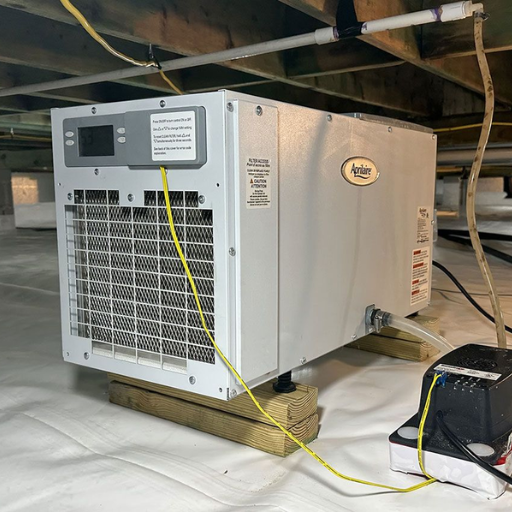
Crawl space dehumidification offers several important benefits that protect your home and improve overall comfort. By reducing excess moisture, it helps prevent mold growth, which can pose health risks and damage your home’s structure. It also minimizes the chance of wood rot, a common issue in damp environments, preserving the integrity of floor joists and other materials. Additionally, dehumidification reduces the presence of pests like termites and dust mites, which thrive in humid conditions. This process can also improve indoor air quality, as less moisture means fewer airborne allergens filtering into your living spaces. Overall, dehumidifying your crawl space promotes a healthier, more durable home environment.
Preventing Structural Damage from Moisture
Excess moisture is one of the primary causes of structural damage in homes and buildings, as it can lead to wood rot, weakened foundations, and the growth of mold. Studies show that wood exposed to moisture levels above 20% for prolonged periods is at significant risk of decay, compromising its strength and load-bearing capacity. Additionally, prolonged dampness can lead to cracks in concrete foundations, as water seepage can erode materials over time and promote freeze-thaw cycles that exacerbate the damage.
To combat these risks, homeowners can implement various preventive measures. Installing a vapor barrier in crawl spaces and basements is one of the most effective methods to block moisture from entering. Dehumidifiers and proper ventilation systems also play a crucial role in maintaining ideal humidity levels, typically below 60%, to deter mold growth and structural deterioration. Furthermore, ensuring gutters and downspouts direct water away from the foundation can prevent pooling and infiltration.
Modern technology allows homeowners to track and manage humidity with precision. Sensors and smart monitoring systems can alert to changes in moisture levels in real time, enabling quick action to avoid long-term damage. Combined with routine inspections and maintenance, these practices can significantly extend the lifespan of your home’s structural elements and maintain a safe, stable living environment.
Improving Moisture Control in Your Home
Effective moisture control is essential for maintaining a healthy and durable home environment. To start, sealing your home’s foundation and walls is a crucial step. Studies show that even small cracks or gaps can allow up to 90% more moisture infiltration during heavy rains. Using waterproof sealants and ensuring proper insulation can drastically reduce this risk.
Ventilation is another key factor. Properly ventilated spaces, particularly in high-moisture areas like kitchens, bathrooms, and basements, can prevent condensation buildup. Mechanical ventilation systems, such as energy recovery ventilators (ERVs), are highly effective, reducing indoor humidity levels by as much as 50%, while also maintaining energy efficiency.
Dehumidifiers are an excellent tool for moisture-prone homes, especially in regions with humid climates. Modern dehumidifiers with built-in hygrometers provide precise humidity control, maintaining recommended levels between 30%-50%. They also come in energy-efficient models, cutting down electricity use by approximately 20% compared to older devices.
Lastly, landscaping can greatly influence moisture control. Targeted updates, such as grading the soil around your home to slope away from the foundation, can redirect water and minimize pooling. Incorporating rain gardens or installing French drains effectively manages excess runoff, reducing risks of foundation damage and localized flooding.
With a combination of proactive measures and smart technology, homeowners can not only prevent excessive moisture but also enhance the overall resilience of their houses.
Reducing High Humidity Levels
High indoor humidity can cause a range of issues, from promoting mold growth to exacerbating respiratory problems for occupants. To combat these challenges, maintaining indoor relative humidity levels between 30% and 50% is recommended by experts. One way to achieve this is by ensuring proper ventilation, particularly in high-moisture areas such as bathrooms and kitchens. Exhaust fans can effectively expel moist air, preventing it from circulating throughout your home.
Dehumidifiers are another valuable tool, particularly in humid climates. Modern dehumidifiers not only regulate humidity but also monitor indoor moisture levels, with advanced models capable of removing up to 50 pints of water from the air per day. Additionally, addressing air leaks around windows and doors by sealing gaps and cracks can reduce excess moisture entering your home.
Finally, controlling indoor sources of humidity is vital. Simple actions such as drying clothes outdoors or using a vented dryer, avoiding overwatering plants, and promptly fixing any plumbing leaks can significantly impact overall humidity levels. Research shows that homes with well-managed moisture levels resists mold growth and maintain better indoor air quality, fostering a healthier living environment.
How Does Crawl Space Encapsulation Affect Installation Costs?
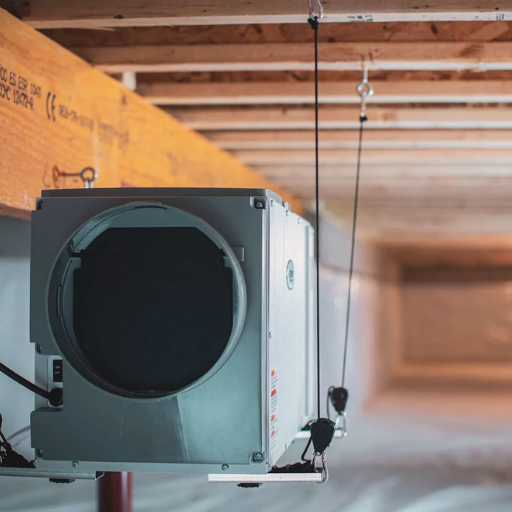
Crawl space encapsulation can affect installation costs in several ways. The overall expense depends on factors such as the size of the crawl space, the materials used, and the condition of the area prior to encapsulation. Larger spaces or spaces with significant issues like water damage or mold will require more extensive preparation and materials, increasing costs. Additionally, higher-quality vapor barriers and insulation contribute to higher upfront expenses but provide long-term energy savings and protection. While encapsulation may seem costly initially, it often leads to lower energy bills, reduced repair needs, and improved home value over time, making it a worthwhile investment.
Comparing Costs: Encapsulation vs Dehumidification
When comparing the costs of encapsulation and dehumidification, it is important to weigh both the initial investment and the long-term value of each approach. Encapsulation typically involves a more significant upfront cost, with professional installation ranging from $5,000 to $15,000 depending on factors such as crawl space size, existing damage, and material quality. This process requires sealing the entire crawl space with a durable vapor barrier, insulation, and potentially a sump pump system. These higher upfront costs, however, often result in energy savings of up to 15-20% annually, better protecting your home and improving air quality.
Dehumidification, on the other hand, represents a more affordable short-term alternative, with units costing anywhere from $150 to $2,000. Professional setup may add $500 to $1,000, depending on system complexity. While dehumidifiers control moisture levels effectively, they do require ongoing maintenance, such as regular filter replacement and electricity usage, which can cost $10 to $30 monthly in utilities. Over time, these recurring expenses can accumulate, potentially diminishing the appeal of the lower up-front cost.
Ultimately, encapsulation provides a more comprehensive solution by addressing the root cause of moisture issues, while dehumidification serves as a temporary moisture management tool. Homeowners should consider their budget, long-term goals, and the extent of current moisture problems when making a decision. Calculating total expenses over several years often reveals the lasting value of encapsulation compared to the recurring costs of dehumidification.
Benefits of Combining Encapsulation with Dehumidification
Combining crawl space encapsulation with dehumidification provides a powerful, multi-faceted approach to managing moisture and protecting the structural integrity of your home. Encapsulation creates an airtight barrier that prevents moisture entry from external sources such as soil and groundwater, while a dehumidifier actively regulates humidity levels within the space to prevent condensation and mold growth.
This combination significantly reduces the risk of common moisture-related issues. For instance, studies have shown that high humidity levels, often exceeding 60% in unprotected crawl spaces, can lead to wood rot, structural weakening, and the proliferation of pests such as termites. By pairing encapsulation with dehumidification, homeowners can maintain indoor humidity within an ideal range of 30%-50%, ensuring long-term protection and improving air quality.
Furthermore, combining these methods enhances energy efficiency. Research indicates that homes with encapsulated and controlled crawl spaces can reduce energy consumption for heating and cooling by up to 15%, as maintaining a stable temperature in the crawl space reduces strain on HVAC systems. This not only translates to cost savings but also contributes to a greener, more sustainable home.
Lastly, this dual approach can positively impact property value. A properly sealed and humidity-regulated crawl space is an attractive feature for potential buyers, as it signals proactive maintenance and promises fewer future repairs. By investing in both encapsulation and dehumidification, homeowners can enjoy a healthier living environment, lower utility bills, and increased peace of mind.
Where to Find Crawl Space Dehumidifier Installation Near You?
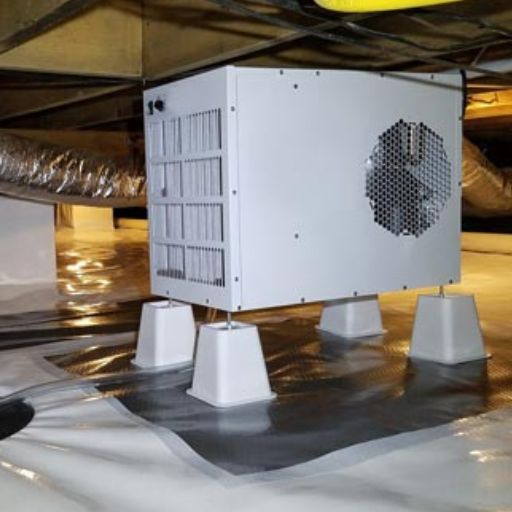
The best way to find reliable crawl space dehumidifier installation services is to start by researching local contractors or companies specializing in crawl space solutions. Look for businesses with strong customer reviews, certifications, and proven experience in encapsulation and moisture control. Trusted platforms like the Better Business Bureau (BBB) and online review sites can help identify credible providers. Additionally, many manufacturers of crawl space dehumidifiers have directories on their websites to connect you with authorized installers in your area. Prioritize companies that offer free consultations or estimates to ensure the solution fits your specific needs and budget.
Choosing the Best Crawl Space Dehumidifier Installer
Choosing the best crawl space dehumidifier installer involves weighing multiple factors to make an informed decision. First, ensure the company is licensed, insured, and has a proven track record in crawl space solutions. Check customer reviews and testimonials to evaluate their reputation and reliability—many companies boast ratings above 4.5 stars in online reviews due to consistent, high-quality service.
Technology and equipment are also key considerations. Look for installers who use energy-efficient and modern dehumidifiers, as newer models typically feature better energy ratings, such as Energy Star certification, and customizable settings for optimal performance. Additionally, inquire about their familiarity with advanced smart systems that allow remote monitoring and control for increased convenience.
Pricing transparency is critical. A reputable installer will offer upfront estimates and competitive pricing, which typically range from $1,500 to $3,000 for installation, depending on the size of the crawl space and the type of dehumidifier required. Avoid companies that present vague pricing structures; a clear breakdown of costs ensures there are no unexpected expenses later.
Lastly, companies offering extended warranties and maintenance packages often provide added peace of mind. Many top-rated dehumidifier installers include warranties spanning 5-10 years, along with flexible maintenance options that ensure long-term reliability and functionality. By considering these factors, homeowners can select an installer who delivers the ideal balance of performance, affordability, and customer support.
Getting a Free Inspection and Estimate
Securing a free inspection and estimate is one of the most straightforward ways to start your dehumidifier installation process. Most reputable installation companies provide this service to assess your home’s specific needs and ensure that you receive a tailored solution. A professional inspection typically examines factors such as the size of the space, existing humidity levels, ventilation conditions, and potential moisture issues. For instance, homes located in climates with high annual humidity averages—such as areas with over 60% relative humidity—might require more robust systems to effectively manage indoor air quality.
According to industry insights, over 80% of homeowners prefer receiving a detailed estimate upfront, as it helps in comparing costs between providers and avoiding unexpected charges later. Additionally, some licensed installers utilize advanced diagnostic tools during inspections to measure your home’s air quality and identify problem areas. These tools can offer homeowners a clear picture of their indoor environment and highlight areas requiring immediate attention.
By taking advantage of a free inspection and estimate, you not only gain a comprehensive understanding of your home’s humidity control requirements but also establish transparency with your installer about potential costs and timelines. This step ensures you make informed decisions while enhancing the comfort and longevity of your living space.
Reference Sources
Frequently Asked Questions (FAQs)
Q: What is the average crawl space dehumidifier cost in 2025?
A: The average cost to install a dehumidifier in a crawl space in 2025 ranges from $1,200 to $2,800, depending on the crawl space’s size and specific requirements.
Q: Why do I need a dehumidifier in my crawl space?
A: A dehumidifier helps manage crawl space moisture, preventing issues such as crawl space mold and structural damage, thereby maintaining a healthy environment in your home’s crawl space.
Q: How does the crawl space’s size affect the cost of installing a dehumidifier?
A: The crawl space’s size significantly impacts the cost of installing a dehumidifier, as larger spaces may require more powerful or additional units, increasing the overall cost.
Q: Can I install a dehumidifier in a crawl space without encapsulation?
A: Yes, you can install a dehumidifier in a crawl space without encapsulation, but encapsulation is recommended to enhance the dehumidifier’s effectiveness and keep your crawl space dry.
Q: What are the operating costs of a crawl space dehumidifier?
A: The operating costs of a crawl space dehumidifier can vary, generally ranging from $15 to $30 per month, depending on energy efficiency and local electricity rates.
Q: Which space dehumidifier is the best for a basement or crawl space?
A: The best dehumidifier for a basement or crawl space depends on specific needs, but models that offer high capacity, energy efficiency, and a robust dehumidifier system are typically recommended.
Q: How can I reduce crawl space dehumidifier costs?
A: To reduce crawl space dehumidifier costs, ensure proper insulation and sealing of the crawl space, maintain regular maintenance, and consider energy-efficient dehumidifier models.
Q: What are the signs that my crawl space needs a dehumidifier?
A: Signs that your crawl space needs a dehumidifier include noticeable moisture issues, musty odors, visible mold, and increased humidity levels in your crawl space or basement.
Q: How does a dehumidifier help with crawl space repair?
A: A dehumidifier helps with crawl space repair by controlling humidity levels, preventing moisture-related damage, and extending the lifespan of structural components in your crawl space.
Q: What should homeowners consider when choosing the right dehumidifier for their crawl space?
A: Homeowners should consider factors such as the dehumidifier’s capacity, energy efficiency, the crawl space’s size, and specific moisture challenges when choosing the right dehumidifier for their crawl space.

